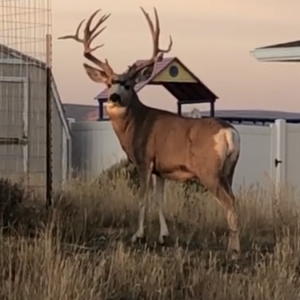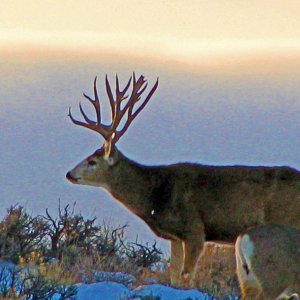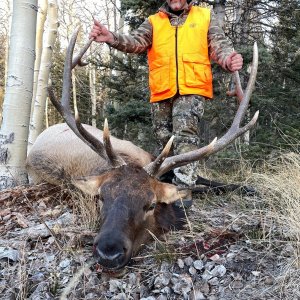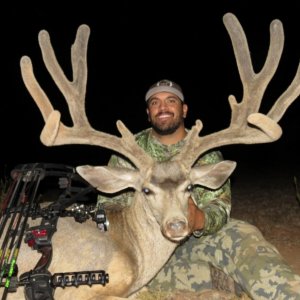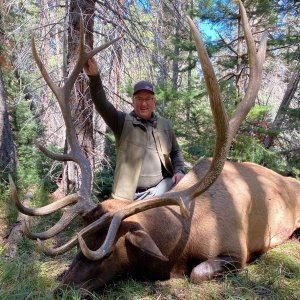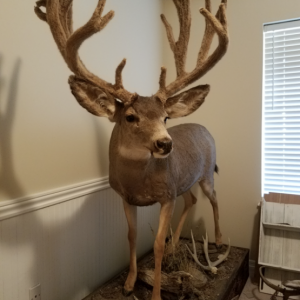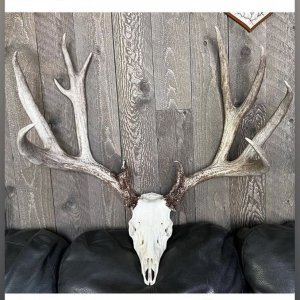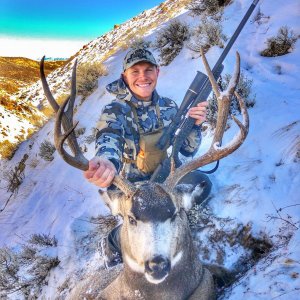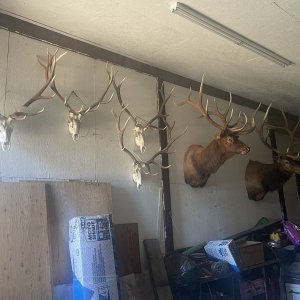From
http://wildsheep.org/sheep/north_american.htm
regarding Fannin:
"Many people believe the Fannin sheep is nothing more than an offspring, or cross, between the Dall sheep and Stone sheep. This, in fact, may be the case, because their ranges do overlap. However, the fact that Fannin sheep exist in the northern Yukon defies this theory. The northern Yukon Fannins are totally isolated geographically from their southern Yukon relatives. A small pocket of Fannin sheep can even be found in Alaska. At present, it is accepted that the northern Yukon Fannins simply range into Alaska. Of course, who is to say absolutely that the Fannin sheep did not initially come from Alaska? There are also Fannins found occasionally in the Mackenzie Mts. of NWT. It is difficult to explain this phenomenon, because the Dall sheep of NWT are isolated from Stones and Fannins by significant amounts of geography. The Fannins of the Mackenzie Mts. are more numerous (but still rare) in the southernmost parts of the range. However, they show up occasionally in the most northern part of the range as well. Rams generally show more color than ewes within a Fannin population. If a ram has only a black tail, it is generally accepted as a Dall sheep. It is only when the dark hair appears on the body that it is considered a Fannin.
From
http://www.wildsheepsociety.org/ regarding California Bighorn (Ovis canadensis californiana):
California Bighorns are a close relative to the larger and blockier Rocky Mountain Bighorn. Although smaller and most often found in lower grassland areas in Central B.C., the Californias are most often found in areas with large expanses of open southern and western facing slopes. In many cases they are found along rugged river valleys.
The B.C. Californias claim to fame is that because of him, there are now a large number of this species populating the various western states of the USA. Many transplants have gone south to rebuild populations decimated by domestic sheep diseases and overgrazing. If it wouldn't have been for these transplants it is doubtful that many Californias would be alive south of the border.
Population estimates were said to be about 4500 in 1997 although the numbers are certainly less now due to localized die-offs. 1998 estimates are approx. 3600 animals. In the USA the population is estimated at 2000. They have a light to dark brown coat , a large white rump patch, a white muzzle and white down each leg. In B.C. the California rams horns tend to drop down and flare out more than the Rocky Mountain Bighorns. This results in fewer true full curl rams but still makes for a stunning trophy.
Also from
http://www.wildsheepsociety.org/ regarding Rocky Mountain Bighorn (Ovis canadensis canadensis):
Wild Rocky Mountain Bighorn Sheep are generally found at elevations above 8,000 feet. Adult male sheep are called rams. Rams grow massive horns that curl backwards alongside the head. Female sheep are called ewes and they grow horns as well although they are much smaller and thinner than a rams horns.
Bighorn Sheep have superior eyesight and agility and therefore, have few natural predators. What is threatening to them is destruction of their natural habitat and diseases.
The Bighorn is covered with a brown coat. It's belly, rump, back of legs, muzzle and eye patch are all white. The male has a hard and thick set of horns. The horns spiral backwards from the top of the head. The Bighorn Sheep is an excellent climber and jumper.
Bighorns are generally active during the day, feeding morning, noon and evening, then lying down to chew their cud. They retire to their bedding areas for the night, which may be used for many years.
The rutting season is from mid-September to late October. During this time, the males have butting contests where they "butt" each other with their horns. During this, they can reach speeds of 50-70 miles per hour and an estimated force of 2400 pounds.
--------------------------------------------------------
I hope that helps you out.
All The Best,
RamDreamer


